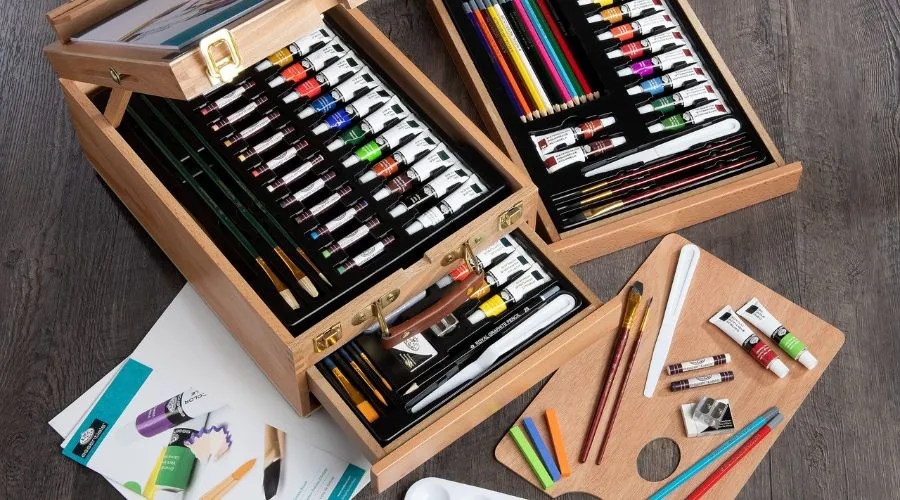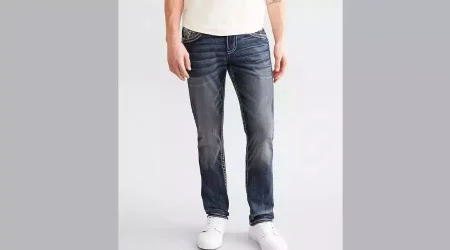Oil paints are known for creating radiant paintings that have a lasting visual impact on any art enthusiast. They produce vibrant colours due to their high pigment concentration and can also be used for different styles and themes. Many renowned masterpieces have been created with these paints, contributing to their enduring popularity among artists and art enthusiasts. In this blog, we will talk about everything you need to know about oil paints- tricks on how to maximise their effects, preparation guides and even picking out some of our favourite paints that you should inculcate in your toolkit.
Tips And Tricks While Using Oil Paints For Your Paintings
● Prep the surface of your canvas
Begin by spreading a coat of gesso onto your canvas, ensuring that it is spread uniformly all over the surface. This not only ensures a seamless surface for you to paint on but also allows for better absorption of paint into the canvas fibres. You can use a toned background to impact the overall mood of your artwork.
● Layering Techniques
Use the prolonged drying period of oil paints to apply layering methods. It is important to ensure that each layer is allowed to completely dry before adding the next to increase the depth and richness of your artwork. This approach also allows for the rectification of errors and the creation of complex nuances.
● Use Mediums Carefully
Explore a range of media to effectively control the texture and drying rate of your paint. Linseed oil can enhance the fluidity of a substance, whilst gel media contribute to the thickness and texture. Stand oil, a light-coloured, viscous linseed oil, may improve the brightness and speed up the drying process.
● Underpainting
It is recommended to start by creating an underpainting using a neutral colour to establish the values and composition before proceeding to add layers of colour and amplify the overall profundity of the artwork. You can use monochromatic underpainting to get grayscale values or opt for complimentary colours to enhance the brightness of the artwork.
● Don’t Overmix Colours
Preserve the brilliance of the colours on the painting by avoiding excessive mixing of colours as it may lead to the production of indistinct and muddled tones. It is best that you choose a smaller colour palette to make your artwork seem less loud.
● Cleanup
Use solvents like mineral spirits or turpentine to clean your brushes well and store them carefully to preserve their form and durability. You can also use a brush cleaning and conditioner to effectively remove resistant paint and maintain the optimal state of your brushes.
Fat Over Lean Method For Your Oil Paints
The “fat over lean” method in oil painting is a fundamental technique to ensure the flexibility and durability of layers. This principle dictates applying paint with a higher oil content, i.e. “fat” over layers with lower oil content, i.e. “lean”. Initially, leaner mixtures, with less oil or solvent, create a stable foundation. Subsequent layers incorporate more oil to prevent cracking, ensuring the upper layers remain flexible. This approach accommodates the natural drying process of oil paint, promoting a balanced and resilient structure and safeguarding against the risk of brittleness, enhancing the longevity and integrity of the artwork over time.
Preserving Your Oil Paintings
● Proper Storage
It is best to display artwork in areas shielded from direct sunlight or use UV-filtering glass or acrylic frames. It is crucial to protect your artwork from detrimental ultraviolet radiation to preserve your oil paints’ vividness and avert potential lasting harm.
You must also regulate the humidity levels surrounding your artwork to avoid the expansion and contraction of the canvas as variations in temperature or pressure may result in the formation of fissures or distortion. You can also use a dehumidifier in instances of high humidity to preserve a consistent atmosphere. It is also important to maintain optimal humidity levels to safeguard the structural integrity and stability of your oil paintings.
● Varnishing
Varnish protects against dust, pollution, and contaminants while simultaneously enhancing the colour saturation in your artwork. Consult a professional conservator for expert guidance on suitable varnishing methods. The ultimate coating guarantees durable safeguarding, maintaining the vividness and state of your artwork throughout time.
Best Oil Paints You Can Use to Create Masterpieces from WHSmith
1. Winsor & Newton Winton Oil Colour Set

The 12-millilitre Winsor & Newton Winton Oil Color Set of 10 Paint Tubes is just the right kit For those just starting their oil painting career. With their firm consistency, the ten essential oil colours in this collection are ideal for retaining brush and palette knife strokes. The pigments of the colours are of the highest quality and give you a high-definition stroke every time. You can easily use this kit with Winsor & Newton solvents, mediums, and oils.
2. Royal & Langnickel Mixed Media Art Set
The Royal & Langnickel Mixed Media Art Set offers a remarkable blend of ease and quality. The artist’s tin is a spacious container that holds a total of 74 items. These include watercolour cakes, mixed media paper, colour pencils, acrylic paints, oil pastels, graphite pencils, brushes, erasers, sharpening, and an educational guide booklet arranged in an appealing metal box. The set is suitable for artists of any skill level with its wide selection of high-quality creative materials in practical and easily transportable packaging.
3. Winsor & Newton Winton Oil Colour

How much white is too much white in any artist’s palette? This is why this Winsor & Newton Winton Oil Colour in Titanium white is the perfect oil paint to include in your collection. The hues included in the collection are highly pigmented so you can create bold and vibrant masterpieces. The titanium white is also perfect for those who have major pastel shades in their artwork because of their high degree of solution.
Also read – Explore The Best Deals And New Models With Volvo s90 For Sale On CarGurus
Conclusion
Oil paints have it all- an unparalleled versatility, slow drying time for a uniformly paced work, vibrant colours with high pigmentation, immense blendability, texture-building capabilities, traditional appeal, smooth and subtle blending, compatibility with various surfaces, and the professional finish they provide. The list simply seems never-ending. Check out Findwyse’s picks for the best oil paints available on WHSmith today and get yourself the best medium for your artwork.










